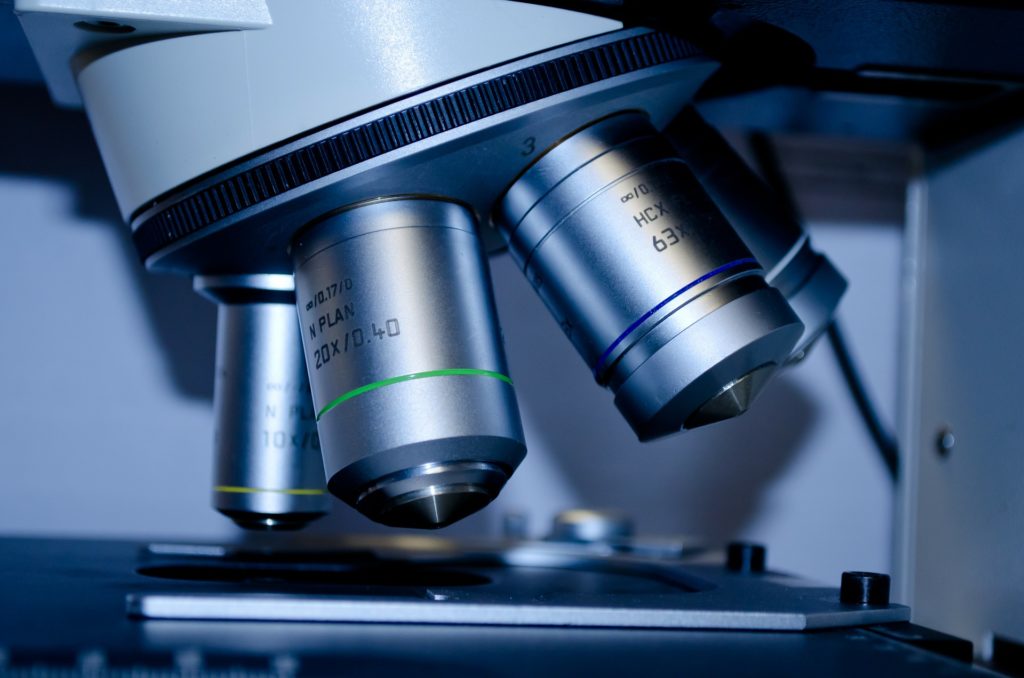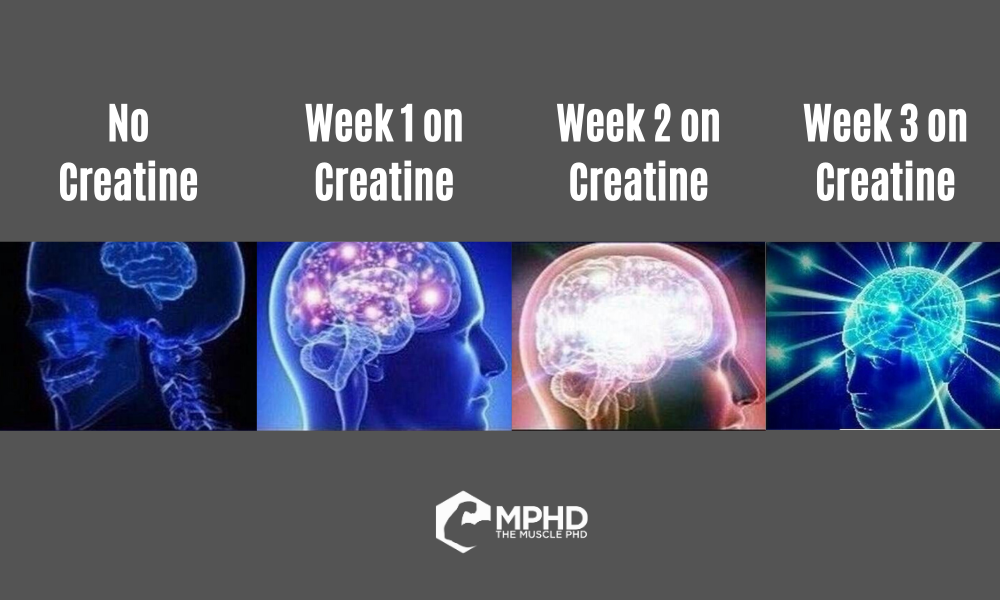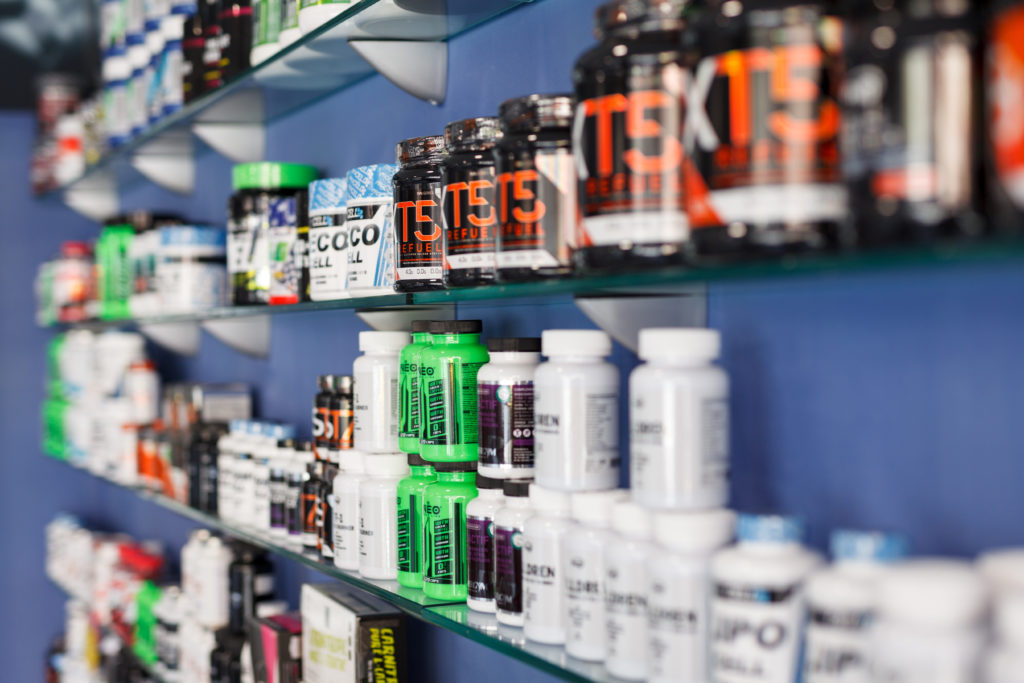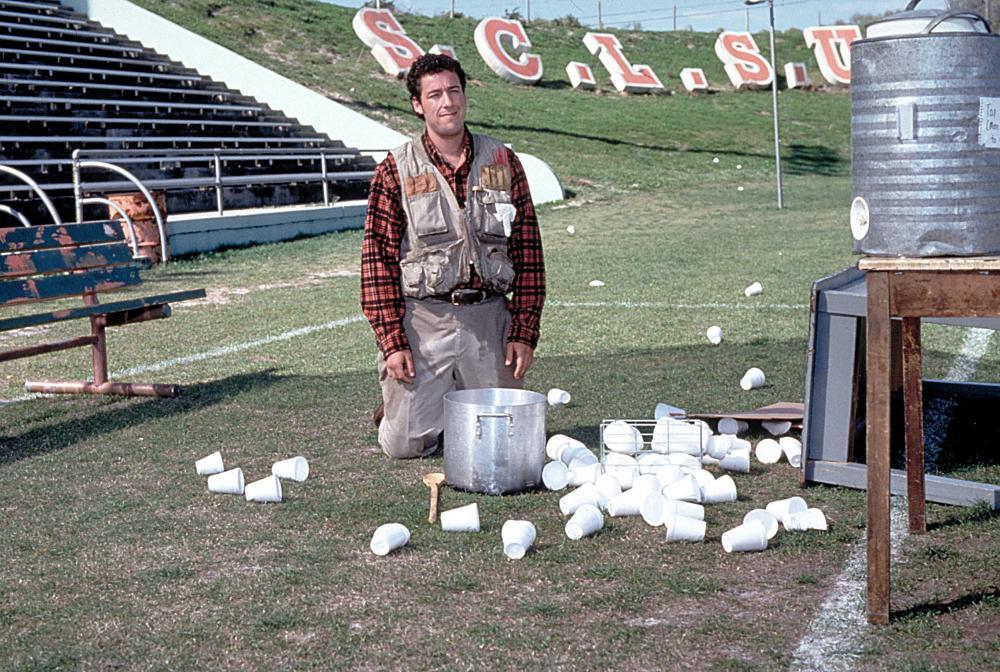Introduction
We get a ton of questions about supplements so it’s worth dedicating an entire article to one of the more popular ingredients: creatine. Creatine has been shown several times over to be effective for increasing strength, performance, and even muscle size. Over the years, however, creatine has also caught flack from suburban moms stressing over its safety, already balding men worried about creatine causing hair loss, and even medical doctors decrying creatine use due to kidney or liver concerns.
Therefore, we need to go over all of the components of creatine supplementation to offer a better understanding of the ins-and-outs at play here. Before we get started, it’s always worth remembering that no supplement is magic, and no supplement is a replacement for a solid training and nutrition program or adequate rest. If you’re always asking the question, “what supplement with help with [insert goal here]” you’re looking at the wrong part of the equation. Optimize your training, diet, and rest first, then use supplements as the extra icing on the cake.
With that out of the way, let’s get started.
What is Creatine? How does it Work?
First, we must understand that all movement and body functions require energy – much like a car requires fuel to run (or electricity for you Tesla fanboys), our muscles also require fuel. This energy is supplied from a molecule known as “adenosine triphosphate,” or, ATP for short. We store a small amount of ATP in our muscles and the rest of it is created through metabolism, or, “energy systems,” as they’re often referred to. These energy systems consist of the phosphocreatine (PCr) system, the glycolytic (anaerobic) system, and the oxidative (aerobic) system.
 Supplementing with creatine increases the amount of phosphocreatine that is stored in the muscle – and other metabolically active tissues, we’ll touch on that later. Phosphocreatine can help produce ATP by supplying its phosphate group to previously spent ATP molecules. When ATP is used to fuel muscle contractions (or any other function), it loses a phosphate group and becomes adenosine diphosphate, or, ADP for short. Phosphocreatine can then “donate” its phosphate group to ADP to re-create an ATP molecule and continue fueling contractions (17).
Supplementing with creatine increases the amount of phosphocreatine that is stored in the muscle – and other metabolically active tissues, we’ll touch on that later. Phosphocreatine can help produce ATP by supplying its phosphate group to previously spent ATP molecules. When ATP is used to fuel muscle contractions (or any other function), it loses a phosphate group and becomes adenosine diphosphate, or, ADP for short. Phosphocreatine can then “donate” its phosphate group to ADP to re-create an ATP molecule and continue fueling contractions (17).
When you perform high intensity exercise, like lifting weights or sprinting, your ATP demand goes through the roof. The phosphocreatine system can help supply that demand, and increasing the amount of phosphocreatine in the muscle can help you better sustain intense performance. The phosphocreatine energy system is still depleted rather quickly in the grand scheme of energy systems, but increasing phosphocreatine storage can certainly help performance during intense lifting sets, sprinting, or other powerful activities.
Due to these actions of creatine, we have a wealth of studies showing improved strength and power performance following creatine supplementation. Creatine supplementation can even help size gains in the long run by improving strength (which means more weights lifted) and may even increase satellite cell activation (5,11). Satellite cells can “donate” their nuclei to muscle cells; and the more nuclei that a muscle cell has, the more it can signal for additional proteins – AKA, growth.
One last point to talk about here before we move on is the finding that people can respond to creatine supplementation in a variety of manners – i.e. some people may make great gains while others hardly make gains at all. From a physiological standpoint, some people simply have higher natural levels of phosphocreatine in their muscles (14). This means that they likely stand to garner fewer benefits from creatine supplementation as people who have lower natural creatine levels. Therefore, you shouldn’t always expect to gain weight from creatine supplementation, but a handful of pounds certainly isn’t unheard of.
What are the Benefits of Creatine Supplementation?
Building off of the point just made, everyone is going to have a different response to creatine supplementation so none of what follows is a guarantee for your personal experience. However, studies have consistently shown that creatine can improve strength and power and can even help promote gains in muscle (2,4,5,11) in virtually all populations.
But we all knew that already, so is there anything else that creatine supplementation can benefit?
Earlier we mentioned the idea of creatine being stored in all metabolically active tissues and not just skeletal muscle. Interestingly enough, per unit mass, skeletal muscle is not the most metabolically active tissue in the body – both the brain and liver consume much more energy than skeletal muscle per unit mass (13). With this in mind, supplementing with creatine will increase phosphocreatine content in all metabolically active tissues, especially the brain (7).
 Interestingly enough, researchers are starting to uncover positive effects on cognitive performance from creatine supplementation (3). This is likely due to the metabolic cost of brain activity and the fact that, as brain energy demands increase (can occur during problem solving, exercise, etc.), phosphocreatine storage can help supply that energy to continue optimal cognitive function (7). This effect has been seen in all populations, however, older individuals and people consuming plant-based diets are likely going to garner the most cognitive benefits (3).
Interestingly enough, researchers are starting to uncover positive effects on cognitive performance from creatine supplementation (3). This is likely due to the metabolic cost of brain activity and the fact that, as brain energy demands increase (can occur during problem solving, exercise, etc.), phosphocreatine storage can help supply that energy to continue optimal cognitive function (7). This effect has been seen in all populations, however, older individuals and people consuming plant-based diets are likely going to garner the most cognitive benefits (3).
So now that we know creatine can help make you a swole genius, what kind should you take?
What’s the Best Form of Creatine?
This is another question we hear all the time thanks to marketing tactics and social media buzz; everyone thinks that they have found the next best form of creatine. But really, as Dr. Eric Trexler discusses, people are looking for solutions to a problem that doesn’t exist (15). Creatine monohydrate has been shown to be effective for improving performance thousands of times – why do we need a “better” version?
In addition, creatine monohydrate has been compared to most of, if not all of, the new and “exciting” forms of creatine. The outcome? Nothing has been shown to lead to faster saturation, greater retention, or greater training adaptations (10,11). While certain forms of creatine sound really cool, these marketing messages focus on the mechanism of action, rather than the outcomes of supplementation (15). Just because a form of creatine has been perfectly pH-balanced to match that of a gas station urinal doesn’t mean it’s going to be more effective than creatine monohydrate.
It sounds boring, and people often equate boring with untruthful, but creatine monohydrate really is the “best” form of creatine. And this is a two-sided statement – it’s just as effective (if not more so) than any other form of creatine while also (typically) being much cheaper and more readily available. However, if you do experience GI issues with creatine monohydrate and not other forms, it might be better for you to give other forms a shot. GI distress during/after training may impair gains in a few different manners and you’re probably better off just trying a different kind of creatine rather than sticking with monohydrate and running to the bathroom stall between every squat set.
Should you Load and Cycle Creatine?
Another common question – is loading creatine “necessary?” In short, no. Studies show that, following a 28-day period, simply taking 3g/day of creatine is just as effective for promoting full saturation as a 7-day loading phase with 20g/day followed by a 3g/day maintenance phase (4). Unless you need a performance boost in 7-days, for whatever maniacally impatient reason, loading creatine really has no purpose in the long run.
Immediately following that quandary, people often ask if one needs to cycle creatine. This ideology likely sprouted from the science and/or “broscience” surrounding prohormones and performance enhancing drugs. Creatine is not a hormone, nor a synthetic version of some hormone. Yes, taking hormones will suppress your own natural production of said hormones, and taking creatine can certainly reduce your own natural production of creatine. However, unlike hormones, your natural creatine production kicks back in pretty quickly after you stop supplementing with creatine (11).
 From the broscience logic of the late 90s and early 2000s, I think some people started to lump creatine in with prohomone supplements and that’s likely where this theory got its start. Not many people challenged it since it held up to broscience logic pretty well. For instance, my anatomy and physiology teacher in high school even said that taking creatine shuts down your natural production for good and used that as ammunition to keep students from taking it. *Sips creatine drink* Oh, how the tables have turned.
From the broscience logic of the late 90s and early 2000s, I think some people started to lump creatine in with prohomone supplements and that’s likely where this theory got its start. Not many people challenged it since it held up to broscience logic pretty well. For instance, my anatomy and physiology teacher in high school even said that taking creatine shuts down your natural production for good and used that as ammunition to keep students from taking it. *Sips creatine drink* Oh, how the tables have turned.
Since we covered loading schedules, let’s go over timing, dosing, and even macronutrient combinations to get a better idea of the intricacies of creatine supplementation.
Timing, Dosing, and Macronutrient Combinations
This section should cover most of the questions we get about:
- When should I take creatine?
- How much should I take?
- Should I take creatine with food?
It’s probably best to take your creatine sometime around your workout – preferably post-workout as this has been shown to be slightly more effective for gains in lean mass and strength (2). This might be due to increased sensitivity to nutrient uptake in the muscle during this post-workout period. If you’d rather have your creatine before your workout with your pre-workout shake, that’s probably fine in the long run, too. If you’ve already been taking creatine for a long time, switching to taking it after your workout probably won’t do much for gains since your creatine stores are already fully saturated.
Creatine dosing is another unique option – we have some researchers that recommend specific amounts per unit body mass but, really, that’s probably an overcomplication of things. The 3-5g/day range has been researched for over 2-decades with positive results coming from both amounts (11). If you’re in doubt with this range, simply shoot for the higher 5g/day end just in case. Mass monsters are probably even fine taking up to 10g/day (11) but, again, taking 5g/day for a longer period will likely garner the same long-term results.
Lastly, taking creatine with food isn’t really necessary, Yes, some studies do show that consuming carbohydrate with creatine can help boost creatine retention (8), however, if your creatine stores are already fully saturated, there’s really no point to that strategy as long as you keep up with your daily doses. In addition, consuming other foods with creatine may increase the incidence of GI distress that some people experience with creatine supplementation (11). Ultimately, the co-ingestion of food with creatine is likely another over-complication that doesn’t really matter in the long run (15).
We know that people love to overcomplicate things – it makes boring subjects sound much sexier and more intriguing. Realistically, though, just toss back 5g of creatine every day whenever works best for you and you’re probably fine. Find better things to stress over – just about everyone has crippling student debt, how’s that going?
Since we have just about everything covered, it’s time to assuage the concerns of the suburban moms and doctors who don’t even lift. Is creatine supplementation safe?
Creatine and Safety
It doesn’t make for a great news headline, but for healthy people, creatine supplementation is perfectly safe, even in the long term (11). For people with pre-existing liver or kidney problems, it’s probably a fantastic idea to speak with your physician before using any supplement, creatine included.
Now, we do have studies showing that creatine ingestion can increase blood creatinine levels (16). Creatinine is typically used as a marker of healthy kidney function, and when medical professionals see higher than normal creatinine on a blood test, they develop some concern over acute kidney injuries. However, creatinine is simply a byproduct of creatine breakdown (15) and supplementing with creatine can increase blood creatinine levels. If you’re supplementing with creatine and happen to be getting a blood test, it’s best to let your healthcare professional know about your creatine use for this reason.
 We also hear concerns that creatine causes dehydration and cramping. This is kind of an oxymoronic myth to pass around – how can people complain about water retention and dehydration at the same time? Creatine supplementation increases intracellular and whole-body water content (11) so dehydration doesn’t really fit into that equation. Now, this isn’t an excuse to skip out on drinking water when you supplement with creatine, but it’s also worth understanding that you don’t have to chug 3 gallons of sugar water a day to stay hydrated while on creatine.
We also hear concerns that creatine causes dehydration and cramping. This is kind of an oxymoronic myth to pass around – how can people complain about water retention and dehydration at the same time? Creatine supplementation increases intracellular and whole-body water content (11) so dehydration doesn’t really fit into that equation. Now, this isn’t an excuse to skip out on drinking water when you supplement with creatine, but it’s also worth understanding that you don’t have to chug 3 gallons of sugar water a day to stay hydrated while on creatine.
On the cramping side of things, no one is exactly sure what even causes cramps. Some have hypothesized that it’s dehydration/electrolyte-based while other have theorized that central nervous system fatigue can play a role. In reality, dehydration and/or electrolyte loss don’t have a ton of strong evidence for causing cramping (12). Recent research suggests that the combination of muscle damage, peripheral and central fatigue, and poor conditioning may impair motor neuron functionality which can lead to cramping (12).
We know that creatine can improve sport performance and even have studies showing that creatine can help accelerate recovery from muscle damage (6). In addition, the effects of creatine on both cognitive and muscular function could actually reduce central nervous system fatigue during exercise (1). With these findings, it’s highly unlikely that creatine ingestion would contribute to cramping when considering the current theories behind how or why cramping occurs.
Lastly, while it’s not exactly a safety epidemic, many people over the years have grown weary of creatine use due to anecdotal reports of hair loss. This issue has not been seen in the research; however, nobody is really counting hairs in creatine studies. In addition, we have no strong evidence that creatine supplementation significantly increases dihydrotestosterone (DHT) levels (15) – DHT is the main hormone associated with hair loss. Now, we can’t say for certain whether or not people predisposed to baldness might accelerate hair loss with creatine supplementation so it could be something to keep an eye on if you’re concerned over the matter. Regardless, it’s likely a very uncommon issue. Plus, being bald makes you look 10x more jacked, so who’s the real winner here?
Oh, one more thing. We often get questions asking if certain supplements are safe for teenagers (high school football players wanting to gain weight, etc.). In theory, yes, creatine is perfectly safe for a healthy teenager (11). However, we don’t really recommend it because it’s not needed. When you’re 15-18 years old, you’re already a hormone power house and you don’t have much lifting experience. This is an incredible combination during your high school years that can get you light years ahead in the training game if you simply work. Train hard, eat a ton of food, and get plenty of sleep every night. Worry about supplements when you’re broke and can’t afford them in college.
Conclusion
Hopefully this piece answers all of your burning questions about creatine supplementation. Really, the two main takeaways that we want to drive home are:
- Keep it simple. The fancier a supplement sounds, the less likely it is to be effective. There’s a reason companies are marketing mechanisms of action rather than outcomes – they have no proof of real results. Toss back 5g of creatine monohydrate every day and you’re set. Do this after your workout if possible, but it’s probably not a big deal if you take it literally any other time.
- No supplement is magic. As effective as creatine has been shown to be, it’s still not going to replace consistent hard work, a proper diet, and 8-hours of sleep every night. There is no shortcut to gains, and no supplement is going to make gains easier in the long run. You still have to get up and put in the work every single day.
In addition, long term creatine use appears to be completely safe for healthy individuals. If you have any concerns about your own health status, PLEASE check with your physician before taking ANY supplement or starting any workout or nutrition program.
References
- Andres, R. H., Ducray, A. D., Schlattner, U., Wallimann, T., & Widmer, H. R. (2008). Functions and effects of creatine in the central nervous system. Brain Research Bulletin, 76(4), 329-343.
- Antonio, J., & Ciccone, V. (2013). The effects of pre versus post workout supplementation of creatine monohydrate on body composition and strength. Journal of the International Society of Sports Nutrition, 10(1), 36.
- Avgerinos, K. I., Spyrou, N., Bougioukas, K. I., & Kapogiannis, D. (2018). Effects of creatine supplementation on cognitive function of healthy individuals: A systematic review of randomized controlled trials. Experimental Gerontology, 108, 166-173.
- Buford, T. W., Kreider, R. B., Stout, J. R., Greenwood, M., Campbell, B., Spano, M., … & Antonio, J. (2007). International Society of Sports Nutrition position stand: creatine supplementation and exercise. Journal of the International Society of Sports Nutrition, 4(1), 6.
- Chilibeck, P. D., Kaviani, M., Candow, D. G., & Zello, G. A. (2017). Effect of creatine supplementation during resistance training on lean tissue mass and muscular strength in older adults: a meta-analysis. Open Access Journal of Sports Medicine, 8, 213.
- Cooke, M. B., Rybalka, E., Williams, A. D., Cribb, P. J., & Hayes, A. (2009). Creatine supplementation enhances muscle force recovery after eccentrically-induced muscle damage in healthy individuals. Journal of the International Society of Sports Nutrition, 6(1), 13.
- Dolan, E., Gualano, B., & Rawson, E. S. (2019). Beyond muscle: the effects of creatine supplementation on brain creatine, cognitive processing, and traumatic brain injury. European Journal of Sport Science, 19(1), 1-14.
- Green, A. L., Simpson, E. J., Littlewood, J. J., Macdonald, I. A., & Greenhaff, P. L. (1996). Carbohydrate ingestion augments creatine retention during creatine feeding in humans. Acta Physiologica Scandinavica, 158(2), 195-202.
- Hawkins, V. N., Foster-Schubert, K., Chubak, J., Sorensen, B., Ulrich, C. M., Stancyzk, F. Z., … & McTiernan, A. (2008). Effect of exercise on serum sex hormones in men: a 12-month randomized clinical trial. Medicine and Science in Sports and Exercise, 40(2), 223.
- Jäger, R., Purpura, M., Shao, A., Inoue, T., & Kreider, R. B. (2011). Analysis of the efficacy, safety, and regulatory status of novel forms of creatine. Amino Acids, 40(5), 1369-1383.
- Kreider, R. B., Kalman, D. S., Antonio, J., Ziegenfuss, T. N., Wildman, R., Collins, R., … & Lopez, H. L. (2017). International Society of Sports Nutrition position stand: safety and efficacy of creatine supplementation in exercise, sport, and medicine. Journal of the International Society of Sports Nutrition, 14(1), 18.
- Miller, K. C. (2015). Rethinking the cause of exercise-associated muscle cramping: moving beyond dehydration and electrolyte losses. Current Sports Medicine Reports, 14(5), 353-354.
- Müller, M. J., Enderle, J., & Bosy-Westphal, A. (2016). Changes in energy expenditure with weight gain and weight loss in humans. Current Obesity Reports, 5(4), 413-423.
- Syrotuik, D. G., & Bell, G. J. (2004). Acute creatine monohydrate supplementation: a descriptive physiological profile of responders vs. nonresponders. The Journal of Strength & Conditioning Research, 18(3), 610-617.
- Trexler, E. (2019). Not another boring creatine guide: Answers to FAQs and lesser-known benefits. Retrieved from: https://www.strongerbyscience.com/creatine/
- Trexler, E. T., Smith-Ryan, A. E., Roelofs, E. J., Hirsch, K. R., Persky, A. M., & Mock, M. G. (2016). Effects of coffee and caffeine anhydrous intake during creatine loading. Journal of strength and conditioning research/National Strength & Conditioning Association, 30(5), 1438.
- Wallimann, T., Tokarska-Schlattner, M., Neumann, D., Epand, R. M., Epand, R. F., Andres, R. H., … & Schlattner, U. (2007). The phosphocreatine circuit: molecular and cellular physiology of creatine kinases, sensitivity to free radicals, and enhancement by creatine supplementation. Molecular System Bioenergetics. Energy for Life, 195-264.
From being a mediocre athlete, to professional powerlifter and strength coach, and now to researcher and writer, Charlie combines education and experience in the effort to help Bridge the Gap Between Science and Application. Charlie performs double duty by being the Content Manager for The Muscle PhD as well as the Director of Human Performance at the Applied Science and Performance Institute in Tampa, FL. To appease the nerds, Charlie is a PhD candidate in Human Performance with a master’s degree in Kinesiology and a bachelor’s degree in Exercise Science. For more alphabet soup, Charlie is also a Certified Strength and Conditioning Specialist (CSCS), an ACSM-certified Exercise Physiologist (ACSM-EP), and a USA Weightlifting-certified performance coach (USAW).




